
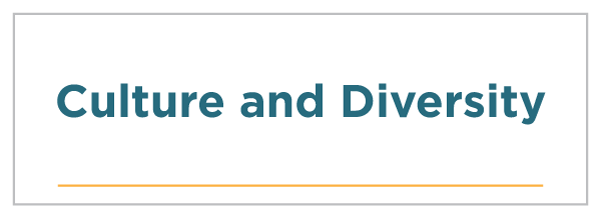 |
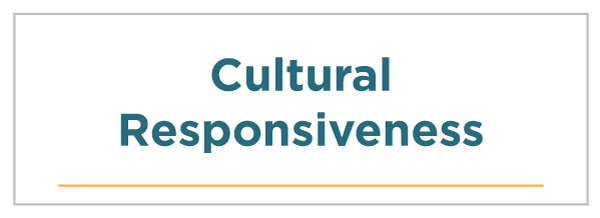 |
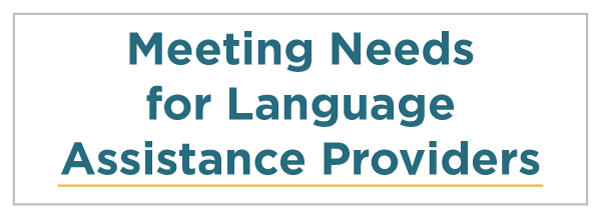 |
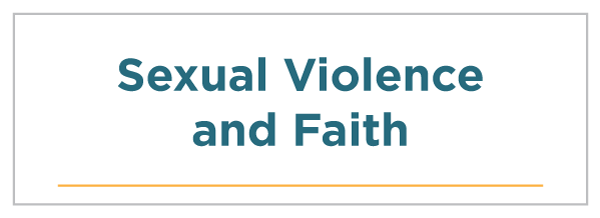 |
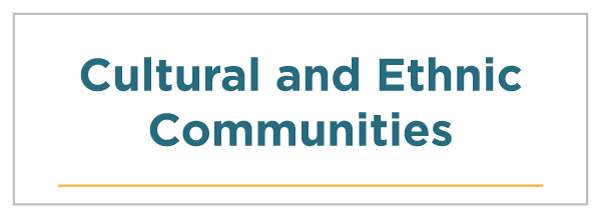 |
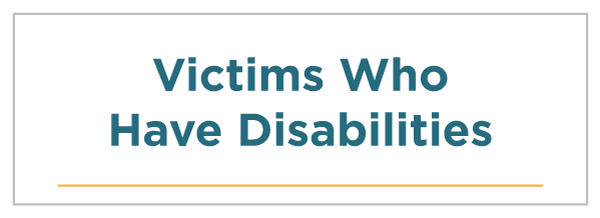 |
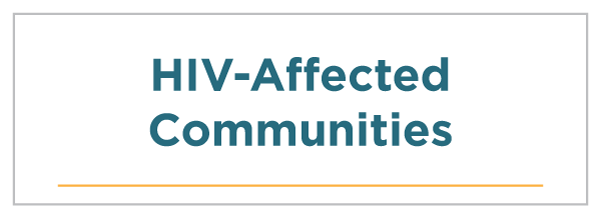 |
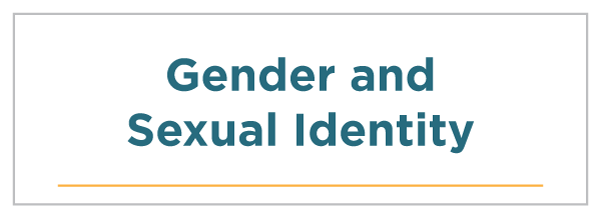 |
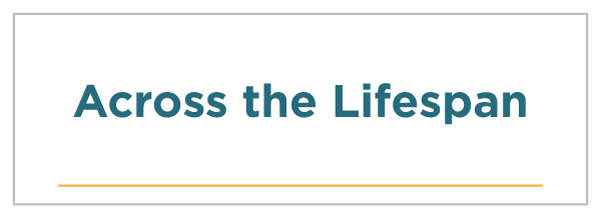 |
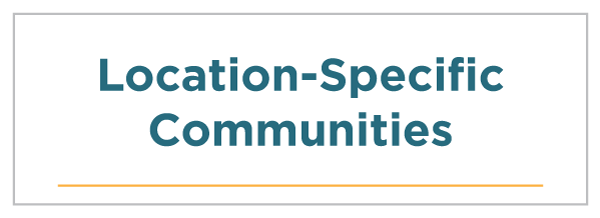 |
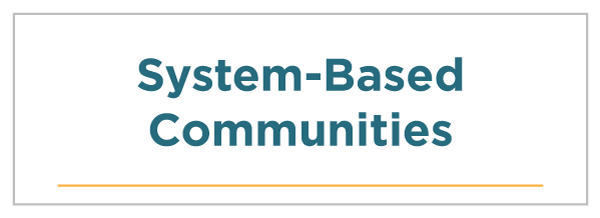 |
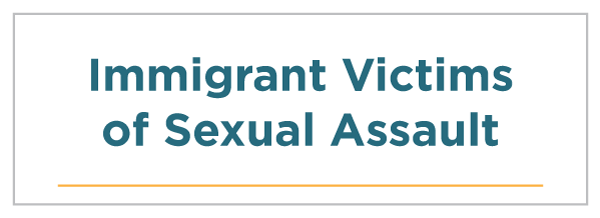 |
Meeting Needs for Language Assistance Providers
The diversity of demographics and languages among the American population has important implications for SARTs. Victims of sexual assault may have limited English proficiency, be Deaf or hard-of-hearing, or have sensory or communication disabilities. According to 2011 Census data, approximately 21 percent of Americans ages 5 years and older speak a language other than English at home. Of those 60.5 million Americans, 42 percent, or over 25.3 million, are likely to need language assistance services when involved in English-speaking systems. Providing appropriate, culturally relevant language access services in the format victims are familiar with is an essential piece to serving victims that require language assistance. [16]
Language access means providing comprehensive and appropriate language assistance services to individuals with limited English proficiency, individuals who are Deaf and hard-of-hearing, individuals who are blind or have visual impairments, individuals with developmental and physical disabilities who need assistive technologies for communication, and individuals with lower health literacy.
SARTs must be able to communicate in the language of the victim when conducting outreach and providing services. To do this, SARTs should proactively develop protocols to provide meaningful language services that consider the confidentiality of victims. SARTs should also develop relationships with community-based organizations, culturally specific organizations, diverse partners, and language service providers, providing cross-training on trauma-informed services and sexual assault before a victim requires the language access services.
Meaningful language access requires that many types of resources, services, and technologies are available in a culturally relevant manner to ensure effective communication and equitable services to all victims. SARTs are in a unique position to share and leverage each team member’s language resources and may benefit from developing a joint language access plan that discusses referrals between each team member.
Access to 911: An example of language access
Language access may mean using alternative and multiple formats. For example, for victims to be able to access primary support such as hotlines, 911, and medical support, effective notices and communications must assure them that services are available in languages they use to communicate. A critical analysis of the information is important to ensure effective communication. The term “911” may mean an emergency contact to some and may have no meaning to others. To ensure effective communication, it may be more effective to use a combination of the numbers 911 and words; for example, using the phrase “numero de emergencia-911” in Spanish.
Also, multiple formats may be helpful depending on the target audience. Crisis Text Line, an organization that provides mental health crisis resources to teenagers, used text messages as a format for communication. Its success is clear by the eight million text messages they received in just over two years. This locally developed solution helped connect a specific demographic of individuals to service providers. SARTs working in collaboration with their communities have excellent opportunities to identify meaningful ways to assist victims.
Title VI of the Civil Rights Act of 1964 prohibits discrimination by organizations and programs that receive federal funding, including discrimination based on national origin. [17] The act states, "No person in the United States shall, on ground of race, color or national origin, be excluded from participation in, be denied the benefits of, or be subjected to discrimination under any program or activity receiving Federal financial assistance." [18]
Courts and regulatory guidance clarified that discrimination based on one’s language is also prohibited by Title VI. Executive Order 13166 further clarified that federal agencies are required to have reasonable steps in place for providing services and information in languages other than English to ensure that people with limited English proficiency are effectively informed and can participate in any benefit. [19] Since many SARTs, almost all hospitals, and numerous other organizations that assist victims of sexual assault receive federal funding, they must meet the language access requirements of Title VI.
The National Immigrant Women’s Advocacy Project (NIWAP) compiled Commonly Asked Questions Regarding Executive Order 13166, providing additional clarifications for the federal requirements for language access. [20]
- Legal responsibilities
- Everyone deserves equal access to criminal justice and health systems
- Ensuring best-quality care for sexual assault survivors who have limited English proficiency (LEP), are Deaf, or are hard-of-hearing
- Ensuring dignity of the victim throughout the recovery process
- Ensuring the victim understands his or her rights, services available, and implications of different criminal justice process decisions
Developing a Language Access Plan
Understanding and processing information can be challenging for victims who have limited English proficiency (LEP). To meet the diverse language needs in their communities, each SART should develop a comprehensive language access plan.
SARTs can use the Language Assistance Self-Assessment and Planning Tool for Recipients of Federal Financial Assistance to evaluate their existing services to identify areas for improvement. SARTs can visit the U.S. Department of Justice Office of Justice Programs information on Language Assistance for additional information on implementing reasonable steps to ensure that persons with LEP have meaningful access to federally conducted programs and activities. [21]
To meet varied language needs, SARTs may consider the following questions adapted from Linguistic Competence in Primary Health Care Delivery Systems: Implications for Policy Makers: [22]
- Does your SART’s mission statement include a plan for providing linguistically and culturally relevant services?
- Does your SART have policies and procedures in place that support diverse and linguistically competent services?
- Are victim consent forms, brochures, and pamphlets in formats that meet the language needs of the community served by your SART?
- Do your policies and procedures evaluate the quality and appropriateness of interpretation and translation services?
- Does your SART have community outreach initiatives to persons with LEP?
- Does your SART have a process for reviewing the emerging demographic trends of the community in a timely manner?
- Does your SART’s fiscal plan include efforts to ensure the provision of translation and interpretation services?
- Are there line items for interpretation, translation, and bilingual salary differential [23] for employees as an example under program costs? [24]
- Does your SART have a way to confirm the accuracy of any translation or interpretation? [25]
The commitment to embrace the entire process of providing culturally relevant and competent language access services should happen on an institutional level. SARTs will require commitment from the agencies of all team members to ensure the sustainability of efforts to meet the language needs of all victims.
SARTs are an excellent place to have discussions about language access as team members can leverage their resources to assess and improve language access services for victims, even in instances where individual agencies may have limited capacity. Since meeting the community’s language access needs requires a thoughtful process equal to the process of creating English materials and resources, it requires the same investment of time and resources and should not be accomplished as an afterthought.
Language assistance services can include the following tools:
- Bilingual [26] / bicultural [27] materials created in a culturally relevant manner.
- Print materials in easy-to-read, specific, simplified language, and picture and symbol formats that are less academic.
- Multilingual telecommunication systems.
- Assistive technology devices.
- Text telephone yoke (TTY) for people who are Deaf or hard-of-hearing.
- Interpretation services for all languages including American Sign Language.
- Transcreation support and services. [28]
- Materials in alternative formats (e.g., audiotape, Braille, enlarged print).
- Telephone voicemail menu in the languages most commonly encountered or in languages of individuals in a SART’s community, even if they are not seeking services yet.
- Certified and qualified interpreters that provide specialized services around domestic and sexual violence.
One consideration is to work with culturally specific organizations and agencies to increase capacity to meet the needs of the community. Some agencies and organizations have resources in more than one language. What is relevant in one culture may not necessarily be relevant to or needed in another culture, so create resources that are reflective of each community’s needs. The Centers for Disease Control and Prevention (CDC) offers community health worker information focusing on reaching Latin@/x communities on relevant topics in a relevant format as a good example. [29]
Once a SART has determined what culturally relevant community services it can provide for its community, a plan on how to reach the community is the next step. Additional steps include —
- learning about the linguistic groups in the surrounding community; [30]
- working with multilingual and multicultural individuals to create and design signs that resonate with identified community members;
- posting signs in intake areas and other entry points and service areas such as restrooms;
- creating outreach documents (e.g., palm cards, postcards, with appropriate consideration of size and visibility of the documents so they are safely and discreetly transportable) that are culturally relevant and in the respective language of the community members to provide information on the services available to them;
- working with other community-based organizations to help inform LEP persons of the language assistance available;
- posting notices to any ethnic media, such as newspapers or radio stations, operating in the community;
- establishing a relationship with schools and religious organizations in an effort to be identified by the community as an ally and then offer trainings, workshops, and groups; and
- being present in the community, attending community events, tabling at local events, and Getting Beyond Translation. [31]
Hiring an Interpreter or Translator
In the process of researching, seeking, and hiring interpretation or translation services, some form of introductory training is encouraged to discuss the importance of confidentiality and the language of sexual assault and review trauma-informed care.
Organizations and agencies hired by SARTs need to have a strong organizational and individual response to victims using a trauma-informed approach. Building Cultures of Care: A Guide for Sexual Assault Services Programs is a useful tool. SARTs may benefit from evaluating language access services by communicating with victims for feedback on the use of interpretation and translation services or communicating with the language access organization, particularly to identify if additional training is needed. SARTs also can exercise leverage with language access companies to ensure consistency and a high level of services to all victims of sexual assault that individual agencies on SARTs may not be able to exercise.
Whenever an interpreter or translator is hired, it is essential SARTs ensure there are no conflicts of interest between the language access provider and the victim. In small communities or with rare languages, it may be especially important to share the name of the individual language access provider with the victim before the interpreter is connected to the victim or documents are provided to the translator.
It is essential SARTs proactively establish protocols with agencies and language access providers to protect victims’ safety and autonomy. Working with attorneys well practiced in confidentiality and privacy concerns, and organizations that represent individuals who require language access, SARTs should develop protocols that respect safety and meet everyone’s needs.
The Refugee Health Technical Assistance Center explains the responsibilities of both an interpreter and a translator in the article Interpreters vs. Translators. [32]
Interpreter Services
Interpretation involves the spoken or signed word communicating information from one language to another language so that it can be understood. The interpreter listens to what is being said and then communicates that information using the target language. SARTs should understand the various types of interpretation and understand which may be appropriate for various situations.
With increasingly diverse SARTs, interpretation may become a standard part of SART meetings. In Wisconsin, Deaf Unity, an organization supporting Deaf victims of sexual assault, is represented on the SART by a Deaf advocate, accompanied by an American Sign Language (ASL) interpreter. [33]
Interpreting involves much more than familiarity with a language. Additional things to consider include how information is delivered, and how to provide translation and interpretation support when certain terms have no linguistic equivalent.
There are 5 Types of Interpretation: [34]
- Simultaneous: The interpreter listens to spoken content through headphones and speaks the translated words into a microphone. As soon as the interpreter understands the general meaning of the sentence, they begin the interpretation.
- Consecutive: To allow the interpreter to render what was said into the target language, consecutive interpreting relies on the speaker to stop speaking frequently — on average, every one to five minutes. The speaker's pauses come at the end of a sentence or topic. While waiting, the interpreter listens and takes notes as the speaker moves forward through the communication.
- Whispered: A variation of simultaneous interpreting, whispered interpretation, involves the interpreter addressing a small target-language audience by whispering a simultaneous interpretation. This method is generally used only when a few audience members do not speak the source language.
- Relay: A source-language interpreter transfers the message to a group of interpreters who have that language in common and who each speak another language as well. One at a time, these interpreters convey the message to their respective audiences.
- Liaison: Also called escort interpreting, liaison interpreting relies upon an interpreter who translates into and out of the source and target languages as a conversation takes place. This type of interpreting is typically used for small, informal situations such as meetings.
Translation Services
Translation involves taking a written text or document and translating it into the language of the targeted audience, whereas interpretation involves the spoken or signed word. Translation services may be necessary to make medical or legal documents accessible to victims or prepare evidence for court, as well as to prepare SART outreach or intake materials.
Translation services may be necessary for collateral court proceedings such as small claims court and custody. SARTs can develop relationships with translation services and develop a translation protocol to enable SARTs to streamline services to victims.
Determining that translation is necessary and ensuring a meaningful translation are two decisions that require coordination, collaboration, and critical thinking. According to the National Center for Cultural Competence, it is necessary for an organization to determine several things before seeking translation services: [35]
- What is the message the SART is trying to communicate?
- What is the purpose of the communication?
- Who is the audience?
- How will it be made available to the community (website, brochure, palm card, etc.)?
Once your SART determines that you need translation, the next step is to find high-quality translation services. It is important for SARTs to use caution when seeking translation services, and implement a screening process when interviewing potential companies or evaluating options involved through local partnerships. Improper translation could result in unsafe outcomes for victims. The American Translators Association (ATA) offers practical things to consider in Translation: Getting It Right: A Guide to Buying Translations.
There are a number of ways to find language access services. Word of mouth is one way to locate services. Doing an internet search for translation services in one’s area is another option. Some agencies partner with local colleges and universities or faith-based entities for translation services, and although these partnerships may prove cost-effective, teaching a foreign language or studying a foreign language are different skills than producing an accurate translation. [36]
An essential step, which partners may be able to help with, is having translated materials reviewed by partner organizations or in-house staff who are fluent to ensure that language and terminology used is appropriate for the intended audience and there are no errors.
While SARTs may not be able to review every translated document, they can develop a procedure to review a certain number of documents per year as part of their ongoing evaluation of services. Language access providers may also see a high level of turnover, and developing a strategic plan that includes evaluation of these services enables SARTs to monitor the relationship to ensure meaningful services to victims over time.
SARTs and Language Access
SARTs will need an interpreter every time they work with an individual, family, or group with limited English proficiency (LEP). SARTs should develop a plan for addressing the linguistic needs of victims and other clients with LEP. The National Protocol for Sexual Assault Medical Forensic Examinations Adults/Adolescents requires providing information to patients in a language they understand throughout the process. [37]
Preparing your SART to work with diverse community members can begin with a community needs assessment to understand the demographics of your community. SARTs are responsible for building and coordinating across their team so they have the capacity to consistently meet the needs of LEP victims.
Once a SART identifies a translator who meets their requirements, it is essential to provide introductory training on sexual assault, anti-sexual assault work, and language used in the anti-sexual assault field for the translator. This work must be done in advance of service provision because it cannot be thoroughly and thoughtfully done during a crisis. Some languages may not have terms to describe the crime of sexual assault, or the language that exists is gendered and may make it challenging for the victim and the translator to discuss the crime.
In some cultures, sexual assault remains a taboo topic, and the language used includes biases. Translators may not be trained on trauma-informed service provision and may engage in victim-blaming behavior. Translators may not be personally prepared to read about instances of sexual assault in a way that does not traumatize them. Having conversations with translators about these topics will enable translators to recognize bias in advance and increase translators’ capacity to provide accurate, meaningful services to victims and offenders without unexpected interruption of services.
SARTs often have multilingual and multicultural members. People who are multilingual may be pressured to translate when this may not be ethically or legally appropriate. In the majority of cases, qualified interpreters should be used when providing services to victims.
Even if a SART member’s language proficiency is assessed and they are considered language proficient, it is essential that a SART member not step outside their professional role to provide translation services as this may compromise the services provided to the victim and compromise the neutrality of that provider’s role. Attempts to help in the moment can compromise the integrity of services, investigation, and eventual prosecution.
Language Assistance Services for the Deaf and Hard-of-Hearing and Other Individuals with Disabilities
Members of the Deaf and hard-of-hearing community have historically been forgotten when it comes to the creation of resources. SARTs need to work with the Deaf community to know and understand their needs and best practices for providing technical assistance around sexual assault resources and support.
A list of governing requirements, State-by-State Regulations for Interpreters and Transliterators, for interpreters for people who identify as Deaf and hard-of-hearing was created by Registry of Interpreters for the Deaf, Inc. It contains links to different states and their specific requirements as well as state Deaf and hard-of-hearing agencies. Information includes state certification and licensure requirements. Read Serving Individuals Who Are Deaf, Hard of Hearing or Deaf-Blind and Do not Use American Sign Language for specific guidelines. [38]
Designing Accessible Events for People with Disabilities and Deaf Individuals is a compilation of resources by Vera Justice Institute for organizations to proactively plan accessible services, events, and meetings.
For more information, explanations, and resources, see the Victims Who Have Disabilities section of the SART Toolkit.
Serving Victims' Literacy Needs
SARTs need to be sensitive to low-literacy individuals. Literacy is crucial for ensuring equal access to justice. Someone having low literacy does not mean they are low in intelligence; some low-literacy individuals have undiagnosed learning disabilities, like dyslexia. Some individuals have experienced volatile or traumatic childhoods that inhibit learning or regular schooling, while some individuals did not have access to literacy education for a variety of reasons.
The Adult Education and Family Literacy Act of 1998 defines literacy as an individual's ability to read, write, and speak in a language, and to compute and solve problems at levels of proficiency necessary to function in everyday life. [39]
Individuals of all ages may have difficulty reading or interpreting written words. It may not be apparent to service providers if a victim has literacy challenges, and the extent of any challenges. Victims may be afraid or embarrassed to admit they cannot read or do not understand a particular word. In addition, the terms related to sexual violence, health care, legal, or criminal justice may be new to generally literate populations.
If victims do any of the following, they may need literacy-related help: [40]
- Ask you to review materials aloud.
- Hesitate or refuse to fill out important forms.
- Say they have forgotten their glasses.
- Glance at a written sheet and then change the subject.
- Stare at the page without moving eyes back and forth.
- Ask questions about content that is clearly stated in the document.
The social stigma of rape weighs on many victims' shoulders, making it difficult for them to come forward, disclose, press charges, and get the help they need. Victims with low literacy skills often struggle with a double stigma — that of sexual assault and illiteracy — that can compound their shame, self-blame, and isolation, making it difficult for them to reach out for help. [41]
Research suggests that childhood trauma may impact learning and language development, so sexual abuse a victim experienced as a child may contribute to their literacy level. [42] Literacy levels can also change over the course of a person’s life. Even a victim who is literate, during times of stress and trauma, may have difficulty reading or comprehending printed materials.
Other causes that can create short-term literacy problems because they impact a person’s ability to focus, concentrate, and process information include — [43]
- lack of practice,
- experiencing harassment or abuse,
- physical or mental health problem,
- stress,
- feeling intimidated by someone or a situation, and
- fear.
To meet the needs of all victims, service providers can take these steps: [44]
- Provide victims with more choices. Ask victims if they prefer to read materials, watch them on video, hear them on tape, or have you review them orally.
- Offer assistance. Ask victims if they would like help in completing written materials such as intake forms, compensation forms, and consent forms.
- Show respect. Frame your questions as follows when someone needs assistance with a form or handout: "These forms can be really confusing for a lot of people. Would it help if I summarized the content and we walked through it together?" This approach conveys respect and validates what victims might be feeling.
- Use graphics, photos, and pictures. Printed materials for adults should include age-appropriate images. Realistic pictures with appropriate backgrounds and details can help convey your concept and message.
- Reduce the number of documents victims must read. Instead of requiring victims to read forms, brochures, and instructional sheets, integrate visual and audio materials into your response. Consider, for example, developing videos to explain the forensic medical exam process or the criminal justice process, provide audiotapes on victims' rights, or create a computer simulation that illustrates the levels of confidentiality among SART agencies and the range of follow-up services available.
- Write documents in plain language: [45]
- Write at a fifth-grade level.
- Avoid using acronyms, abbreviations, jargon, and technical terms. Define necessary jargon or technical terms.
- Keep sentences short — between 8 and 10 words.
- Keep paragraphs short — between three to five sentences.
- Provide the most important information first.
- Provide no more than three or four main ideas per document or section.
- Clearly state what the reader should do.
- Use font that is between 12 and 14 points. Headings should use font that is at least two points larger than the main text. Text should be dark letters on light background.
- Use bold type to emphasize words or phrases.
- Use bullet points.
- Be culturally sensitive. Victims may need multiple services. Translated materials for limited English proficiency (LEP) victims may not help victims with low literacy skills. Address translation and literacy needs simultaneously.
- Take more time. Slow down so victims can understand each part of the proceeding.
- Repeat important information. Most people who cannot use printed material must rely on memory. Repeating important information can help increase and reinforce knowledge and understanding.
- Suggest ways to help them remember important information. You can suggest that the victim bring a trusted friend or family member with them to important meetings to help them remember information. Inform the victim that you can make follow-up phone calls to remind them about important dates, appointments, etc., in a way that keeps the victim safe (e.g., not leaving messages, or leaving messages without identifying what agency the caller is from and asking for a call back, or providing information only to the victim).
Literacy and Language Access
An individual’s spoken language ability may not be consistent with their ability to read or write in any particular language. Do not assume someone who can speak English is comfortable reading in English. If English is a second language to a victim, they may be more comfortable reading in their first language. Do not assume the victim is literate in their first language just because they are fluent in speaking it.
For example, if a victim whose first language is Spanish is given materials in Spanish, they may not have the ability to read in Spanish and may require additional assistance. Written materials in all languages should follow these guidelines. Visit the Developing a Language Access Plan section of the SART Toolkit for additional information on language accessibility.
Technical Assistance Providers
Asian Pacific Institute on Gender-Based Violence
This national resource center provides information on domestic violence, sexual assault, trafficking, and other forms of violence in API communities. The API-GBV works to raise awareness about gender-based violence, expand resources, and increase understanding about violence against women.
Casa de Esperanza provides resources for organizations working with Latin@/x in the United States. This organization is also home to the National Latin@ Network for Healthy Families and Communities, which provides training and technical assistance and conducts research.
This organization works to end domestic and sexual violence in Deaf communities by providing education, services, and training and technical assistance.
DeafBlind Community Access Network
The DeafBlind Community Access Network (DBCAN) program works to empower Deaf-blind people to increase and sustain their independence in the community. DBCAN’s services are available to Deaf-blind adults in the Commonwealth of Massachusetts.
DEAF C.A.N.! Community Advocacy Network
Deaf Community Advocacy Network – DEAF C.A.N. — is a nonprofit organization established in 1981 to provide services to the thousands of Deaf and hard-of-hearing people living in Michigan. DEAF C.A.N. offers direct client services to individuals and families, as well as community education and information for professional groups.
DeafLEAD provides advocacy, crisis intervention services, case management, interpreting, counseling, and other direct services for Deaf, hard-of-hearing, Deaf-blind, and late-deafened victims, survivors, and their families. DeafLEAD provides a 24-hour crisis and text line.
MPI provides analysis, development, and evaluation of migration and refugee policies at local, national, and international levels. Their website provides a number of resources related to analyzing and improving language access services.
National Association of the Deaf
The NAD is the nation’s premier civil rights organization of, by, and for Deaf and hard-of-hearing individuals in the United States. NAD offers many resources, including language access requirements for the Deaf community regarding court, civil rights, health care, and much more.
Registry of Interpreters for the Deaf
RID strives to advocate for best practices in interpreting, professional development for practitioners and for the highest standards in the provision of interpreting services for diverse users of languages that are signed or spoken.
The Vera Institute of Justice works to make change and improve justice systems, focusing on such issues as securing equal justice, strengthening communities, reaching all victims, and promoting racial equity.
Language Access Resources
Language Access in Courts
Court can be a stressful and often intimidating environment, and the legal process can be scary for victims. The process is lengthy, emotionally exhausting, and exposing. Trauma is revisited repeatedly. The legal system has a language of its own, and if a victim does not have full language access, being in court can be overwhelming.
Court Interpretation in Protection Order Hearings: Judicial Benchcard (PDF, 3 pages)
The National Center for State Courts created a resource that answers questions around determining if a party needs an interpreter, how to appoint and locate an interpreter, and much more.
Increasing Language Access in the Courts: Toolkit (PDF, 43 pages)
Developed by The National Latin@ Network, this toolkit was created to increase language access in the courts, following a national assessment of the accessibility of language in the court systems for survivors of sexual and domestic violence.
Language Access Services Section
Developed by the National Center for State Courts, this website contains court interpreter resources. Also included are contact information for state and federal interpreter programs, certification information, and more.
Language Access in Public Safety Agencies
Interacting with public safety organizations such as police and emergency responders can be overwhelming for victims who have limited English proficiency (LEP) or other language access needs. Below are resources that can improve public safety responses.
Bridging the Cultural Divide: Cultural Competence in Public Safety (PDF, 5 pages)
Published in Emergency Number Professional Magazine, this article provides practical tips for service providers working with telephone interpreting services to overcome barriers of culture and language.
Overcoming Language Barriers: Solutions for Law Enforcement (PDF, 20 pages)
From the U.S. Department of Justice (DOJ) Office of Community Orientated Policing Services (COPS) program, this resource highlights tools law enforcement agencies can use to improve communication with non-English speaking persons.
Language Access Standards
Enhancing Cultural Competence in Social Service Agencies: A Promising Approach to Serving Diverse Children and Families (PDF, 8 pages)
This research brief by the Office of Planning, Research and Evaluation provides possible strategies around building cultural competence for working with the Latin@/x community, providing relevant support and resources, and adapting programs to be more relevant.
Hablamos Juntos: Universal Symbols in Health Care
This resource is for health care organizations developing models for offering language services. Support and information are available on language barriers on easy-to-use signs for LEP community members.
Improving Patient Safety Systems for Patients with Limited English Proficiency
This guide helps hospital leaders create a supportive culture for patients, identify and prevent medical errors among LEP patients, and monitor the safety of LEP patients.
National Health and Nutrition Examination Survey: Interpretation Guidelines (PDF, 20 pages)
These guidelines include a definition of interpreter, protocols for interpreters and examiners, information on bilingual certification, and the National Health and Nutrition Examination Survey (NHANES) translation process.
National Standards for Healthcare Interpreter Training Programs (PDF, 43 pages)
This resource provides specific recommendations and standards around health care interpreter training that may be useful guidelines for SARTs.
A Patient-Centered Guide to Implementing Language Access Service in Healthcare Organization (PDF, 249 pages)
This resource was created in 2005 by the U.S. Department of Health and Human Services (HHS) for health care organizations but is also a source of information on language access that is relevant across many agencies and organizations.
A Practical Guide for Implementing the National Standards for Culturally and Linguistically Appropriate Services in Health Care (PDF, 121 pages)
The U.S. Department of Health and Human Services (HHS) Office of Minority Health has developed National Standards for CLAS. Some of the topics covered include understanding the need to strive toward cultural and linguistic competency and devising a workable strategic plan.
Registry of Interpreters for the Deaf, Inc. Code of Professional Conduct
This is an example of a code of professional conduct for interpreters working with the Deaf community.
Resource Guide for Advocates and Attorneys on Interpretation Services for Domestic Violence, Sexual Assault, and Trafficking Victims (PDF, 87 pages)
This guide by the Asian Pacific Institute on Gender-Based Violence provides background information on interpretation, an overview of language access rights and laws, and information on interpreter qualifications.
Study Reveals Unique Issues Faced by Deaf Victims of Sexual Assault
This article published by the National Institute of Justice (NIJ) in 2007 discusses a study on improving the relationship between law enforcement and the Deaf community.
Training for SARTs Working with Language Access Services
This blog is updated with information relative to translation and interpretation services.
Assisting the Blind and Visually Impaired: Guidelines for Eye Health Workers and Other Helpers
Available through the National Center for Biotechnology Information, this resource discusses how to work with people who are blind and visually impaired. Most providers of care and support services can benefit from recommendations on meeting and greeting, approaching someone who is blind and visually impaired, and offering assistance guiding someone.
Basic Needs of the Deaf (presentation)
This slideshow has a wealth of information on understanding the impact of deafness on physical, social, vocational, and other levels.
Creating Access: Supporting Survivors of Sexual Assault with Disabilities (PDF, 35 pages)
This resource looks at the intersections of sexual violence and other oppressions.
The Cross Cultural Health Care Program
This program provides consulting, resources, and training on creating culturally and linguistically appropriate access to quality services.
Deaf Culture and Community (PDF, 5 pages)
This resource explains Deaf culture and the issues that professionals working with members of the Deaf community should know.
Empowering Survivors: Legal Rights of Immigrant Victims of Sexual Assault (PDF, 18 pages)
Chapter 2 of this book informs and trains advocates and professionals to build capacity. Along with case examples that offer a perspective of the challenges faced by limited English proficiency (LEP) immigrant victims, this chapter includes who is covered by Title VI, what language access provision means to LEP individuals, and much more.
Existe Ayuda Toolkit (online toolkit)
This toolkit, developed for bilingual and bicultural advocates, provides information on sexual assault as it pertains to working with Latin@/x communities.
Interpretation Technical Assistance and Resource Center
ITARC provides training and technical assistance on laws, language access policies, how to work with interpreters, and more. It also offers resources such as glossaries, language identification tools, and training curricula.
Language Assistance Self-Assessment and Planning Tool for Recipients of Federal Financial Assistance
This self-assessment helps service providers that receive federal funding determine whether their services are accessible, including whether they are useful for people with limited English proficiency.
Language Services Resource Guide for Health Care Providers (PDF, 186 pages)
This resource provides background on language access, information on developing a language services plan, a language services resource locator, an interpreter training programs directory, and tools such as testing resources and glossaries.
Massachusetts Health and Human Services: Interpreter Services
These resources from the Massachusetts Health and Human Services Department include information on Title VI, materials for a hospital-based interpreter service public awareness campaign, and information on working with interpreters in Massachusetts.
National Latin@ Network Enhancing Access for Individual with Limited English Proficiency Toolkit
This toolkit includes resources for service providers to serve victims with limited English proficiency. It includes a process for developing a language access plan, management tools for day-to-day use, language access strategies, and other resources.
The Needs of the Deaf Community
SARTs can best serve victims with sensory disabilities by learning about their needs and concerns. Deaf and Hard of Hearing Service Center, Inc. published this post that answers questions regarding technology and how hearing individuals can make sure individuals who are Deaf are included in the services provided.
Patients with Limited English Proficiency
This module from the Agency for Healthcare Research and Quality is designed to train health care staff on working with patients who have limited English proficiency.
This website sponsored by the Office of Minority Health features information, continuing education opportunities, resources, and more for health care professionals to learn about culturally and linguistically appropriate services.
Choosing a Language Access Service
For-profit companies may be of assistance in providing language access services. This is not a complete list, and the Office for Victims of Crime (OVC) does not endorse any specific vendors. Specific services, including the quality of services provided, may change between organizations and over time.
All vendors, on this list or otherwise, should be vetted according to the guidelines in the SART Toolkit and of individual SARTs.
In addition to providing translation and interpretation services, ALTA also trains interpreters and performs language training and testing.
American Translators Association
This organization provides professional development, certification, and assistance in finding translators.
This company offers interpreter services, over-the-phone interpretations in 170 languages, video-interpreting services, document translations, and a language line for individuals with limited English proficiency.
This Deaf-owned company connects individuals and service providers with ASL interpreters.
National Center on Domestic and Sexual Violence: Access to Services
This list provides resources for people with disabilities around sexual assault support, domestic violence support, and more.
This company offers over-the-phone interpretation, on-site interpretation, translation and localization services, and consulting services.
Translation and Interpretation Network
This network provides interpretation and translation services as well as training and consultation.
Language Access for Health Care Settings
The health care community is a leader in developing standard language and requirements for providing language access to individuals seeking services. The following resources come from health care settings that discuss the importance of providing all patients with appropriate language access services.
This page provides resources on health literacy, including how to create a plan, guidelines and standards, and program evaluation.
Health Literacy Universal Precautions Toolkit, 2nd Edition
This online toolkit aids with primary care practices to serve patients of all levels of health literacy. The toolkit includes information on improving spoken and written communication, as well as tools to help patients improve their self-management and empowerment.
Improving the Health Care Response to Domestic Violence: A Trainer’s Manual for Health Care Providers (PDF, 267 pages)
This learning module focuses on domestic violence, but the concepts could be applied to a SART’s work as well.
This roundtable aims to inform stakeholders on health literacy practices. The website includes reports, summaries, and papers.
The Terminology of Health Care Interpreting (PDF, 10 pages)
This glossary is specific to health care interpreting but has relevant terminology for advocates and helping professionals and provides tips on effectively working with interpreters.
Language Access Related to Literacy Levels
Centers for Disease Control and Prevention: Learn about Health Literacy
This page defines health literacy and provides resources on improving health literacy.
Everyday Words for Public Health Communication (PDF, 44 pages)
This document from the CDC lists frequently used terms in public health materials and their common, everyday, plain language alternatives. SARTs can use this in creating accessible documents.
This free website calculates the readability of written text by providing the grade level the text is written at. It also highlights sentences and phrases that are hard to read, allowing the user to make edits to improve readability.
How to Check a Document’s Readability in Microsoft Word (PDF, 2 pages)
This is a short, print-and-go tool on how to access the readability analysis tool in Microsoft Word.
How to Write Easy-to-Read Health Materials
This resource by Medline Plus provides step-by-step instructions on creating easy-to-read health information.
How to Write Low-Literacy Materials
This manual from Journal of Extension at the Ohio State University includes quick tips and a test that measures the reading level of printed materials and lists additional resources.
National Assessment of Adult Literacy
The National Assessment of Adult Literacy (NAAL) is a nationally representative and continuing assessment of English language literacy skills of American adults.
This website provides information and resources on writing in plain language. It provides before-and-after examples, helpful document checklists, and Federal Plain Language Guidelines.
Reaching Individuals Along All Literacy Levels (PDF, 5 pages)
This document by the Pennsylvania Coalition Against Rape (PCAR) informs Pennsylvania's crisis advocates, counselors, and prevention educators about the connection between literacy and sexual violence and how they can appropriately respond. It can be easily adapted for SART interagency responses.
Simply Put: A Guide for Creating Easy-to-Understand Materials (PDF, 44 pages)
This guide from the CDC provides information on how to present complicated scientific and technical information in a clear and understandable way. While the focus is on health-related information, this guide can be adapted for SARTs to use in their interagency responses.
Writing Text to Reach Audiences with Lower Literacy Skills (PDF, 8 pages)
This bulletin written by Communication for Change (C-Change) provides specific examples of text that will reach audiences with low literacy skills.
| Back | Index | Next |
